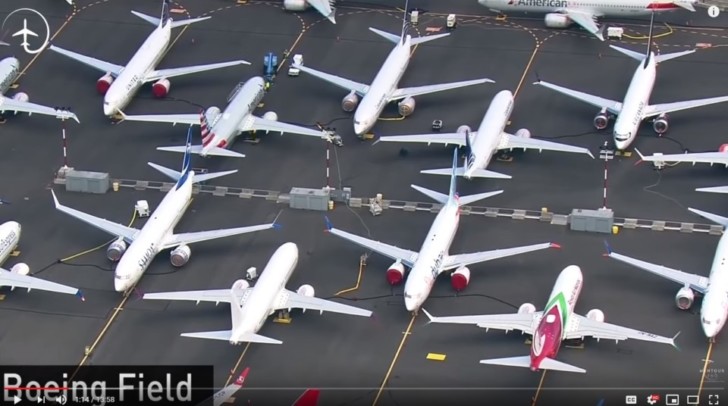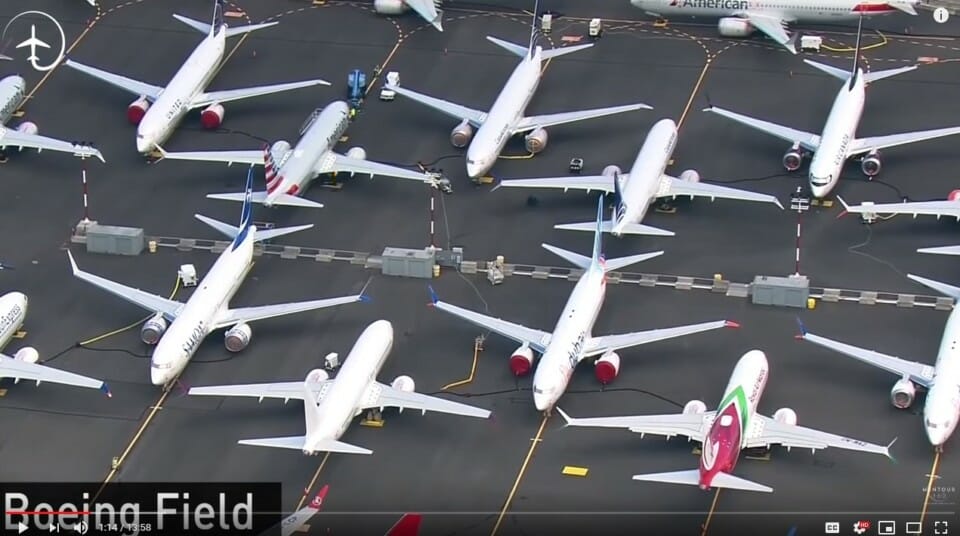News about the Boeing 737MAX reentering commercial airline service has been mostly quiet for the past month. The 737MAX which is the “bread and butter” aircraft for Boeing is still undergoing flight trials to gain FAA certification.
A Little Background
For those of you that are new to the 737MAX troubles, here is a brief history of the problem. The 737MAX uses the next-generation LEAP-1 engines which are far more fuel-efficient turbofan engines replacing the CFM-56 family of engines. The LEAP-1 engine is much larger in diameter than the CFM-56 that created ground clearance problems. Instead of raising the height of the landing gear, Boeing chose to mount the LEAP-1 engine further forward and higher up on the wing. Doing this changed the lift component of the wings changing how the 737MAX handles compared to current 737 models.
Boeing had to make a choice. They could leave the aircraft the way it was which would require transitioning 737 pilots to get training and certification for the 737MAX. This would cost the airlines money and take pilots out of service to complete simulator training. The option that Boeing chose was to have the flight management system retain the same handling characteristics by creating a software system called MCAS. It is the faults in the design and implementation of the MCAS system that caused two fatal crashes leading to the worldwide grounding of the 737MAX thirteen months ago.
Boeing has reworked the MCAS software and it is currently being evaluated by the FAA in order to gain the airworthiness certification that it needs for airlines to resume flying the 737MAX. There is no firm date when Boeing could obtain recertification to return the aircraft back to service.
More Problems For The 737MAX
Two months ago, another problem was discovered that required a fix to address an indicator light issue. Last month, it was discovered that wiring bundles located in the tail of the aircraft were improperly installed. Now, two new problems have been discovered that effect:
- Hypothetical faults in the flight control computer which could lead to a loss of control referred to as a “runaway stabilizer” and
- A possible uncontrolled autopilot disengagement during the final approach phase of landing.
These issues must also be addressed in order for Boeing to obtain the airworthiness certificate needed for the 737MAX to begin flying again.
The FAA told Boeing as it “continues its work on the automated flight control system on the 737 MAX. The manufacturer must demonstrate compliance with all certification standards.”
What’s Ahead For The 737MAX Return To Service
The FAA is under intense scrutiny in regard to how it certifies aircraft types in light of the fatal crashes involving the 737MAX. They are in no hurry and ultimately it is on Boeing to make or break the certification process. A key certification flight was scheduled for this month and now it looks more likely that it will occur in late May at the earliest. Automation in the flight management system means that the aircraft is easier to fly and decreases pilot workload. The problem with cockpit automation is that increases the complexity of flight management software. In essence, pilots are more or less flying a computer instead of basic hand-flying of the aircraft.
Final Thoughts
Before the pandemic hit, airlines were hurting because they counted on the 737MAX to replace older aircraft and enable airlines to expand their routes. The pandemic has lessened the impact of delivery delays because the airlines don’t have to make aircraft payments on aircraft that have not been delivered. The last things the airlines need right now are more aircraft and more aircraft payments.
There is no telling if the lastest software issues will be the last to be discovered in the 737MAX flight management computer. I firmly believe that the FAA is going to thoroughly put the 737MAX through intensive testing before certification is obtained by Boeing. That means that other software issues could be discovered down the road. The FAA is in no hurry to certify this aircraft. In the current state of air travel, the airlines are now in no hurry to receive and pay for new aircraft.
As far as passenger confidence is concerned, they should know that the 737MAX will ultimately be the most scrutinized aircraft to obtain FAA airworthiness certification.




